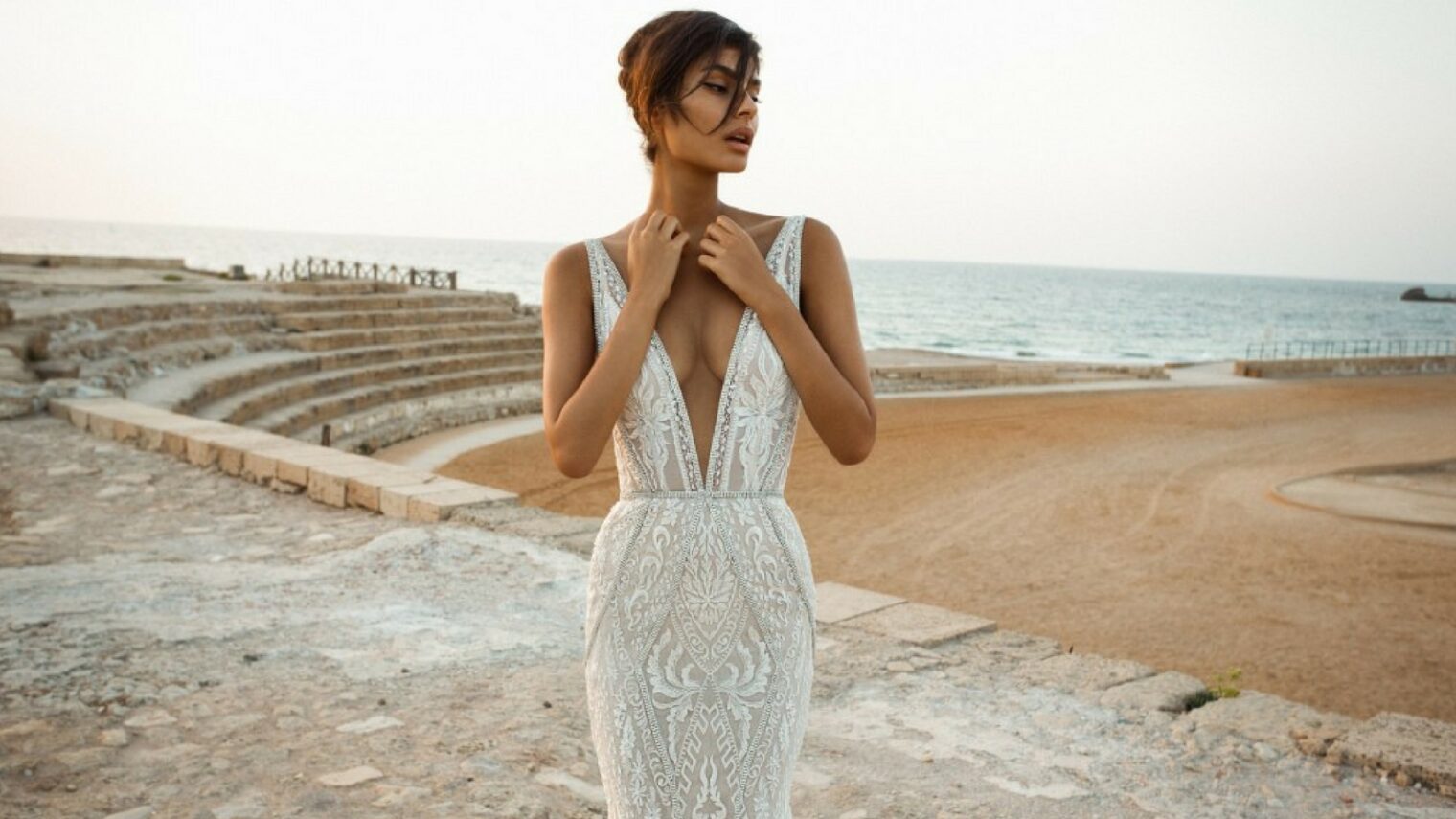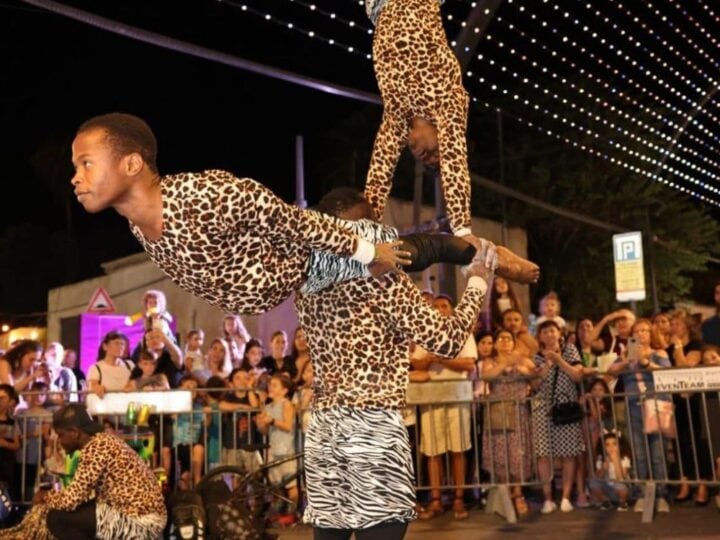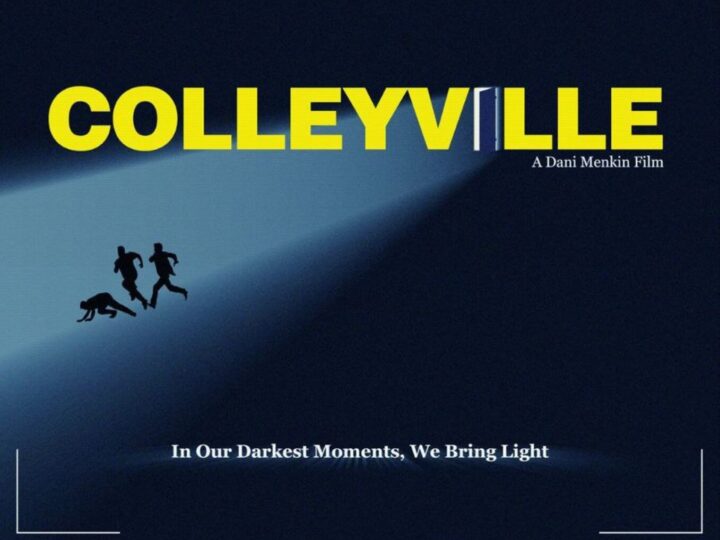During her three-month-long search for a wedding dress, Lacy Kiernan tried on nearly a hundred dresses at 12 different stores but never considered wearing anything beaded or embellished. To her surprise, when she finally found “the one,” it was a form-fitting gown by Israeli designer Mira Zwillinger, almost entirely covered in beads.
The Connecticut native said Zwillinger’s designs were unlike any she had seen before. “The way their gowns are cut, the lace they choose and the tasteful embellishment added to each gown help them to really stand out in a sea of white dresses,” said Kiernan, whose July 2017 wedding in Newport, Rhode Island was featured in Vogue.
Many brides are saying no to conventional satin ball gowns in favor of dresses that have a modern vintage look with embellishment, beading and a nod to sexiness, says Alexandra Macon, Vogue contributing editor and founder of wedding blog Over The Moon.

Pointing to Israeli designers Mira Zwillinger, Inbal Dror and Galia Lahav, whose heavily embellished, forward-thinking designs have been worn by celebrities like Beyoncé and Serena Williams and considered by bride-to-be Meghan Markle, Macon says there has been an influx of designers from Israel who are helping brides achieve that “wow” moment.
“The embellishment was perfect and the beading looks so well done. It looks like it could be a red-carpet dress,” Macon said of Kiernan’s Mira Zwillinger gown.
The long road from Tel Aviv to New York
Yehuda Katzman, now VP of marketing at Inbal Dror, says that when Dror approached him to work together in 2012, the few Israeli designers dealing with the bridal market were almost all locally oriented.
The exception was Pnina Tornai, whom Katzman helped introduce to the US market. Through connections in the garment business, he arranged a meeting with Kleinfeld Bridal, a New York bridal salon featured in reality TV series “Say Yes to the Dress.”

“They were very hesitant about taking the line,” said Katzman, who at that time specialized in exposing Israeli manufacturers to the international market. “In general, the bridal design market was very conservative. The look that Pnina brought in was fresh and different. The dresses were more romantic, more revealing and more attentive to the figure of the bride.”
Eventually, Kleinfeld agreed to carry Tornai’s collection exclusively. Within a few years, it became the store’s top-selling line.
Royal exposure
Next to enter the New York bridal scene was Inbal Dror, who began working with Katzman nine years later. In comparison to Tornai’s extravagant full skirts, Dror’s approach was more minimal.
“On my first trip to the US with Inbal’s dresses, I went to a bunch of stores and they all looked at the dresses and said ‘Wow! What is this?’ No one was doing anything remotely similar,” Katzman said of Dror’s designs, which at the time featured few layers and long, detachable trains.

North American bridal stores quickly began stocking up on Dror dresses, including Roma Sposa in Michigan, Panache in California, Mark Ingraham in New York, Ever After in Miami and White Toronto in Toronto. With prices starting at around $8,000, the line was positioned among the top designers of the world.
Dror, who previously dressed Beyoncé for the Grammys in 2016, was contacted by the royal family about possibly making the wedding dress for Markle’s May 19 wedding to Prince Harry.
While Katzman was unable to comment on any developments since the three initial sketches were leaked in December, he said that the experience was “awesome and surprising.”
“We couldn’t buy, for any amount of money, the media coverage that we got from this. Almost every publication contacted us,” he said.

The new bridal vision
Galia Lahav head designer Sharon Sever, whose dresses for Serena Williams’ bridal party made headlines last year, credits Israeli designers’ knack for thinking outside the traditional bridal box to Israeli wedding culture.
“Our weddings are different. They’re very long, it’s very hot, and brides want to be comfortable. They want to eat, drink and dance,” said Sever, who studied couture in Paris and has been designing at Galia Lahav for 20 years. “I always say we do fashion for brides, not wedding gowns.”
The latest collection, presented earlier this month at New York Bridal Week, has detachable trains, sleeves and skirts.

“I love that gasp when a bride walks in and everyone’s breath is taken away, but what do you do with that train afterwards? What do you do with those sleeves? And what do you do with that big skirt?” Sever said. “We found ways of peeling them off, which can transform the gown completely and allow you to have a second look.”
Brides looking to wear Galia Lahav on their wedding day often place orders a year or two in advance. Every detail is custom made, from fabrics and dyes to hand embroidery and beading.
Fabrics are flown in from all over the world, including tulles from Japan, embroidery from France and silk from Italy. However, the real magic happens inside the brand’s South Tel Aviv atelier, where dresses are designed and manufactured before being shipped out to brides from Asia to North America and more than 80 stores worldwide.
Sever points to Instagram as a game-changer for Israeli designers because they are no longer disadvantaged by their geographical location. With more than 1.7 million followers, the Galia Lahav Instagram account has made the brand more accessible and allows Sever to receive instant feedback.
“Now you’re dealing with a client who is so much more informed just because of the information she has at her fingertips. She can look easily at every designer across the spectrum and compare, whereas before these designers would have felt so far away and inaccessible to her that they never would have entered the realm of possibility,” explains Vogue’s Macon.

















